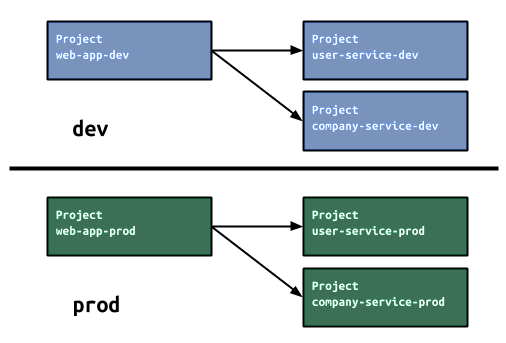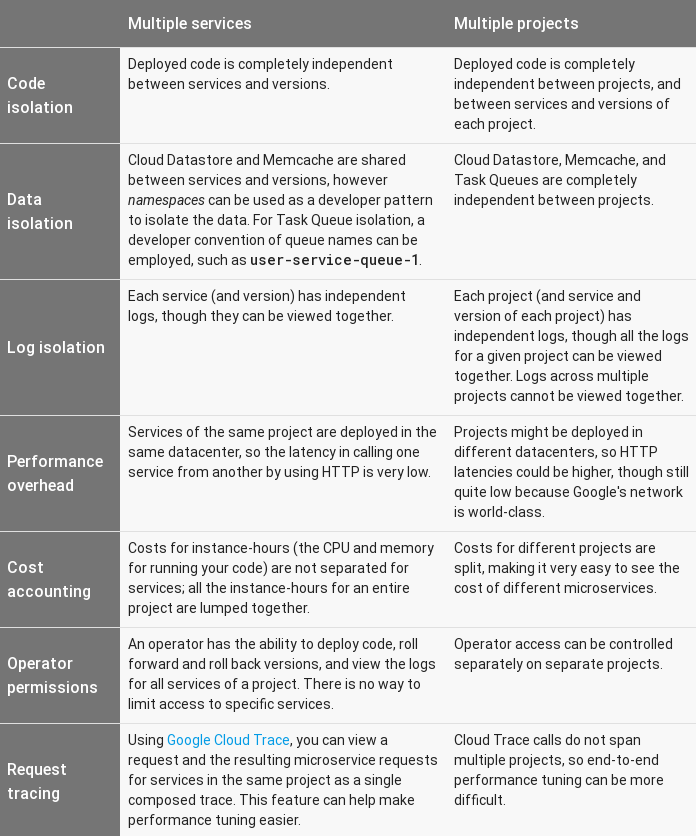In Naming Developer Environments Google suggests 2 approaches for implementing different CI/CD environments for GAE apps
- based on different services (which used to be called modules) inside the same project/app:
If you choose to create your microservices application by using only multiple services, you can create a single App Engine project for each of your environments and name them accordingly, such as
web-app-dev,web-app-qa, andweb-app-prod.
- based on different projects/apps:
Alternatively, if you choose to create your microservices application by using multiple projects, you can achieve the same separation between environments, but you'll need to use more projects, such as
web-app-dev,web-app-prod,user-service-dev, anduser-service-prod. You will need to use code patterns to ensure that thedevprojects only call otherdevprojects and theprodprojects only call otherprodprojects.
The phrasing in the above documentation snippets appears to suggest the 2 approaches would be roughly equivalent, but there is at least one significant difference between the 2 approaches: a project/app based approach ensures data isolation, while a service/module based one does not - the datastore and memcache are shared by all services.
A more detailed comparison between the 2 approaches from the isolation perspective is documented in Comparison of service isolation and project isolation:
The following table provides a comparison between using multiple services and multiple projects in a microservices architecture:
My question is: apart from the above-mentioned differences, are there other advantages of using the project-based approach versus the service-based one? Or anything that may be considered a disadvantage?


